The long-awaited updates are here for AstroFlav IsoMix, a pure whey protein isolate powder that sports "Out of This World Flavor" -- and they've been well worth the wait!
We first learned about AstroFlav in late 2019, where we were blown away by one unique flavor and then it won out in a blind taste test in another.
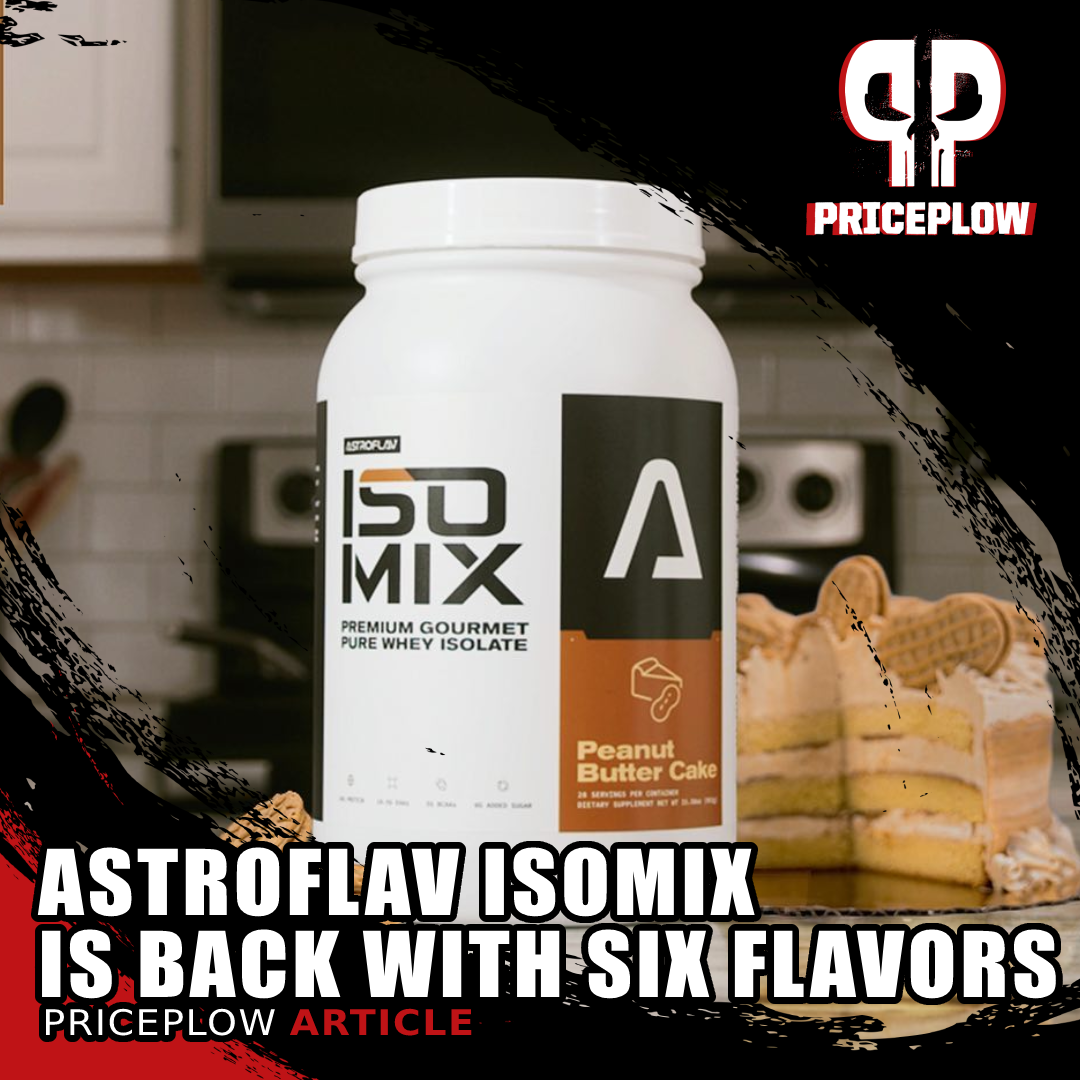
AstroFlav IsoMix - a delicious pure whey protein isolate with "Out of This World Flavor" - is back with six flavors, boosted by MCT and inulin. No more watery isolates!
Over the next couple of years, AstroFlav rounded out their supplement lineup, establishing themselves not only as true flavor innovators, but great capsule supplement formulators as well.
But it always comes back to this one product that kicked it off: IsoMix!
Out of This World Flavor in a Pure Whey Isolate
IsoMix is back and it's better than ever, with six insanely delicious flavors that are nearly mind-bending.
Whether you're a chocolate and vanilla kind of person, need a thicker isolate with fluffy peanut butter flavors, enjoy some extra zing from cinnamon, or want what could easily be the best Cookies & Cream whey protein isolate ever, AstroFlav has something for you in IsoMix.
In this article, we dig into the details of how they made it so very good, but first we show product availability and our flavor reviews online:
AstroFlav IsoMix – Deals and Price Drop Alerts
Get Price Alerts
No spam, no scams.
Disclosure: PricePlow relies on pricing from stores with which we have a business relationship. We work hard to keep pricing current, but you may find a better offer.
Posts are sponsored in part by the retailers and/or brands listed on this page.
This area is reserved for Team PricePlow's upcoming Product Review video.
Subscribe to our channel and sign up for notifications so you catch it when it goes live!
Below, we get right into the ingredients. But lower in this article, we justify why you should consider a higher-protein diet, and why whey protein is king amongst the protein powders. Click here to skip to that introduction -- otherwise, let's cut right into IsoMix:
The IsoMix Macros
With the inclusion of MCT oil and inulin, as well as a couple of flavors utilizing peanut flour, we'll see a few more calories than most pure whey isolates. Worth it? Absolutely.
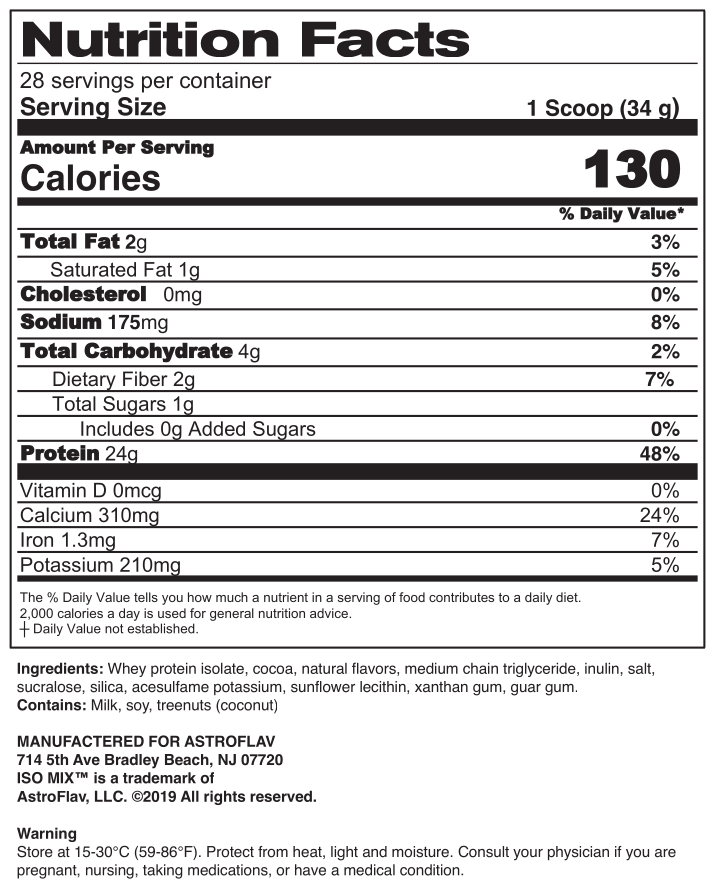
The AstroFlav IsoMix Ingredients -- This is for Chocolate, and macros and additional ingredients will vary by flavor
-
Calories: 120 - 140
-
Protein: 24g
-
Total Carbs: 4-6g
-
Dietary Fiber: 1-2g
-
Total Sugars: 1g
-
Added Sugar: 0g
-
-
-
Total Fat: 1-2g
-
Saturated Fat: 1g
-
As usual, Vanilla Bean has the fewest calories/carbs/fats, while the extra-dank Peanut Butter Cake flavor has the most.
AstroFlav IsoMix Ingredients
In a single 1 scoop (34 gram) serving of IsoMix from AstroFlav, you get the following:
-
Whey Protein Isolate – ~33 grams (yielding 26 grams protein)
Whey protein is the most common form of supplemental protein in the industry today, and there are a few excellent reasons why that's the case:
First of all, whey is highly bioavailable,[1] meaning that your body actually absorbs and uses an unusually high proportion of what you ingest, compared to other forms of protein.
Whey also acts quickly, reaching peak concentration in your blood just 1 hour after ingestion (compared to about 3 hours for mixed macro meals).[2] This rapid absorption means that whey can help you recover fast after a tough workout.
Compared to, say, plant-based sources of supplemental protein, whey is much higher in essential amino acids, the aminos that we must obtain from diet.[3]
Tons of research indicates that whey supplements, when combined with an appropriately nutrient-dense, whole-foods diet, can help improve body composition and strength in men and women alike.[4-7]
Whey Isolate vs. Whey Concentrate
You may have noticed that whey isolate isn't the only form of whey on the market today – whey is often sold as whey concentrate or simply whey protein.
We like seeing the isolate form of whey because compared to whey concentrate, it's subjected to a much stronger filtration process, designed to remove as much of the naturally-occurring carbohydrates and fats from the whey fraction as possible.
This gets you better macros if your goal is to eat a high protein diet. And as an added bonus, some (key word: some) people with dairy sensitivities may tolerate whey isolate better than whey concentrate.
-
Flavor system extras (cocoa and/or peanut flour or cinnamon)
Although not a major ingredient in IsoMix, we love to see cocoa powder in anything - and that's what we'll get in the two chocolate-based flavors.
After all, cocoa is incredibly high in epicatechin and other polyphenol antioxidants,[8] consumption of which has been linked to lower inflammation, improved circulation, lower blood pressure, better cholesterol profile, and better blood glucose control.[8]
Cocoa's ability to reduce blood pressure can be attributed in part to the nitric-oxide (NO)-boosting effect of these antioxidants.[9,10] Higher NO production is almost always a good thing – the improvements in circulation that it brings can improve physical and cognitive function.
The legendary Cinna Crunch flavor of course has cinnamon, which has many health properties in terms of blood sugar regulation.
Alternatively, you may see some peanut flour, which comes in the Chocolate Peanut Butter and Peanut Butter Cake flavors. This adds a touch of fat and calories, making them the two highest-calorie options.
-
MCT Oil Powder
We love seeing MCT oil used as the fat base in supplements because it's much better than common alternatives.
Highly unsaturated fats like canola oil or, God forbid, soybean oil are vulnerable to a process called lipid peroxidation,[11] which makes dietary fats go rancid. In highly unsaturated fats – like soybean, canola, or corn oil –, this can happen at room temperature or close to it.
There's good evidence that consumption of rancid/peroxidized fats is damaging to human health,[12-17] so we want to avoid that. Unfortunately, in packaged or processed foods that typically sit on shelves for a long period of time, the use of highly unstable unsaturated fats is exposing you to rancidity issues.
MCT oil, on the other hand, is fully saturated, with no double or triple carbon bonds that are vulnerable to being peroxidized by free radicals.
This makes it much less likely to go rancid, making it a safer choice of fat base for something like a protein powder.
Of course, there isn't a ton of MCT oil in IsoMix, but in our opinion it's much better to use an oil like this than some of the unsaturated "competitor" oils.
Shoutout to AstroFlav for getting this very important piece of the dietary puzzle right.
Why use an oil at all?
Given our spiel on the benefits of high protein diets down below, you might be wondering: why add fat calories to a whey protein powder at all? Why not just keep it as close to pure protein as possible?
The answer is basically that it makes the experience of eating the powder much more enjoyable for you, the consumer:
Fat thickens the powder, improving its mouthfeel, and also amplifies the flavoring from ingredients like cocoa.
It's also going to mix better with liquid, since the fat acts as an emulsifier that keeps the powder from clumping.
-
Inulin
New to the 2022 release of IsoMix is inulin, the prebiotic fiber that's been shown to improve microbiome health.[18,19] It's called a prebiotic because probiotic bacteria feed upon it.
This adds the gram of fiber to each IsoMix label. An interesting note is that inulin has been shown to help with blood sugar control.[20]
Overall, this is a very beneficial ingredient, but it's not going to be in a clinically significant dose -- it's really here to help with mouth feel and taste. But we'll never say no to beneficial compounds like inulin and MCT oil, even if in small doses.
-
Other ingredients
IsoMix is sweetened with both sucralose and acesulfame potassium, and has salt to round out most of its flavor system.
Finally, at the end of the label, IsoMix has a gum blend of both xanthan gum and guar gum, both of which are supported by sunflower lecithin for dispersion. We've found that using more than one gum just seems to perform better, especially in pure whey isolates.
Flavors Available
So why are we here in the first place? Most of you know why, but just in case, let's settle the score regarding high-protein diets and protein sources:
Why We Love High-Protein Diets
If you've ever hit the gym for any significant length of time, you are no doubt intimately familiar with the ritual post-workout protein shake. Almost all serious weightlifters and athletes try to load protein as soon as they can after their workout.
Part of the reason for this is physical culturists' desire to take advantage of the "anabolic window," a 1-2 hour period following a workout in which your metabolism is primed to make the most of the protein and carbohydrates that you give it. The idea is that if you eat food for recovery inside of this window, you'll end up building more muscle per calorie than you would otherwise.
In recent years modern research has called the concept of the anabolic window into question, although the issue is far from settled. There's still hope for the anabolic window.
Beyond the anabolic window: total protein per day
Regardless, there's an even more basic reason for taking supplemental protein: the total amount of protein that you consume is undoubtedly a main determinant of how much muscle you build in response to exercise.[21]
The question, as always, is one of dose. How much protein do we need to eat?
The answer is basically way more than the average person, but a lot less than the bro-scientists would lead you to believe.
The current research on protein seems to show that gains from further protein intake begin to diminish around the level of 0.75 grams of protein per pound of body weight per day.[22]
If you take this figure as the basis of a double 95% confidence interval – meaning that you add two standard deviations of addition protein intake to this number, just to be absolutely sure that you're not missing out on anything – you end up with a recommendation of 0.82 grams per pound of body weight per day.[23]
The RDAs aren't made for athletes like ourselves
So that figure is clearly a lot bigger than the current United States Department of Agriculture's Recommended Daily Allowance (RDA) for dietary protein, which is 0.8 grams of protein per kilogram of body weight, which converts to a paltry 0.36 grams per pound.[23]
An important thing to understand about the RDA is that it's not wrong per se – it's just calibrated for sedentary people whose only goal is to prevent muscle loss by maintaining nitrogen balance. For athletes, bodybuilders, or just anyone who moves a lot – you're going to need significantly more protein than the RDA. For people like that, figures like 0.82 grams per pound of bodyweight come into play.
The more intense your exercise and the more volume of exercise you do, the higher your protein requirement will be.
An excellent study published in 2016, and written by Dr. Guoyao Wu of Texas A&M university, gives us a great summary of the current research on protein requirements:
"Based on short-term nitrogen balance studies, the Recommended Dietary Allowance of protein for a healthy adult with minimal physical activity is currently 0.8 g protein per kg body weight (BW) per day. To meet the functional needs such as promoting skeletal-muscle protein accretion and physical strength, dietary intake of 1.0, 1.3, and 1.6 g protein per kg BW per day is recommended for individuals with minimal, moderate, and intense physical activity, respectively."[24]
In other words, the most active people benefit the most from 1.6 grams of protein per kg of body weight per day, which shakes out to about 0.71 grams of protein per pound of body weight per day.
The daily protein intake of the average American adult is 88 grams of protein per day. Applying our 95% double confidence interval protein optimal protein target, we can calculate that this would be enough protein for an athlete of about 107 pounds. Most of us are bigger than that.
Sedentary people, on the other hand, can weigh up to 244 pounds before they need more than 88 grams of protein per day.
That should give you an idea of how much exercise can increase your protein requirement.
Let's say you're lifting weights three times a week, with cardio on the days in between. In that case, you would be placing a much better bet on a protein intake somewhere between 0.71 and 0.82 grams per pound of bodyweight.
A 175 pound man who's very active would need 130-150 grams of protein per day to maximize his recovery and muscle gains from exercise.
In other words, way more protein than you'll get eating the Standard American Diet (SAD). That's a fair amount of steak and eggs, but thankfully, we have protein powders like IsoMix to help.
The Thermic Effect of Protein Makes Leaning out Easier
Besides maximizing your gainz, eating lots of protein can also go a long way towards getting you lean and keeping you lean.
One reason for this is that protein has the highest thermic effect of any macronutrient.[25]
Thermic effect refers to the amount of energy that your body expends on digesting the food you've eaten. Every calorie spent on digestion is ultimately a net calorie that you can add to your total daily energy expenditure (TDEE), increasing your calorie deficit and thus losing the fat faster.
So when you eat lots of protein, you're burning more calories.
This has been verified by direct measurement – in one study, researchers fed subjects a few different diets with the same amount of calories, but different macronutrient ratios.
They found that the people who got a high-protein diet actually had a higher resting metabolic rate (RMR) than those who ate more carbs or fat.[4]
Protein Increases Satiety, Spontaneously Reducing Food Intake
In another study, scientists discovered that study participants who started a diet consisting of 30% protein by calories ate 441 fewer calories per day without being prompted.[26]
This means that over the course of a week, you would create a caloric deficit of 3,087 calories.
According to the well-worn theory that one pound of body fat contains 3,500 calories, this means that you could lose nearly a pound of body fat per week just by eating more protein.
Why Protein Powder
You can get protein from whole foods, obviously. So why take a supplemental protein powder?
Protein powder makes hitting difficult macronutrient targets much easier
Eating tons of protein can get kinda challenging sometimes.
Some people will actually struggle to eat 130-140 grams of protein even on a maintenance calorie diet, but it is undeniably tough once you start cutting calories to lose weight.
Restricting your caloric intake by 25% or more means that you have much smaller margins to play with in hitting your all-important protein target. Even whole foods that are high in protein will typically contain a significant amount of carbs or fat.
That's where a high-quality protein powder like AstroFlav IsoMix comes in –
Since it's based on whey isolate, IsoMix is 80% protein by calories (26 grams of protein works out to 104 calories from protein, out of 130 total calories per serving).
It's basically impossible to find whole foods that are this high in protein by percent calories – one exception being the infamous bodybuilder chicken breast, of course.
Having an extremely high protein food in your arsenal makes hitting your protein target while staying under your calorie limit much easier.
Availability and convenience
Preparing protein-rich foods is generally pretty involved – it might not take a lot of time, necessarily, but you typically need access to a kitchen and fresh ingredients.
It's sometimes possible to dine out and find things like protein burgers, but for people who are strictly tracking their macronutrient and calorie intake, the ambiguity of not knowing exactly what's in your food, and how much, can be unacceptable.
With a protein powder, all the guesswork is eliminated and it couldn't be more convenient. You can take your protein powder with you anywhere: just dump it into a liquid (water, or even better, milk) and mix it. Done.
IsoMix is back, and it's as good as advertised
Are there pure whey protein isolates with a few less calories from carbs and fats out there? Yes.
But are those whey isolate powders as delicious as IsoMix? The answer is no. This stuff is that good.
We're excited to see IsoMix back in stock, and are happy they kept MCT oil inside. The addition of inulin makes it even better, and the proof is definitely in the pudding with these flavors.
AstroFlav is known for Out of this World Flavor, so they had to knock Chocolate and Vanilla out of the park. But the Peanut Butter ones blend so well with this MCT / inulin combination, they are stealing the show. At the same time, don't sleep on Cookies & Cream flavor - you've probably never had a pure isolate C&C that's this delicious.
AstroFlav IsoMix – Deals and Price Drop Alerts
Get Price Alerts
No spam, no scams.
Disclosure: PricePlow relies on pricing from stores with which we have a business relationship. We work hard to keep pricing current, but you may find a better offer.
Posts are sponsored in part by the retailers and/or brands listed on this page.
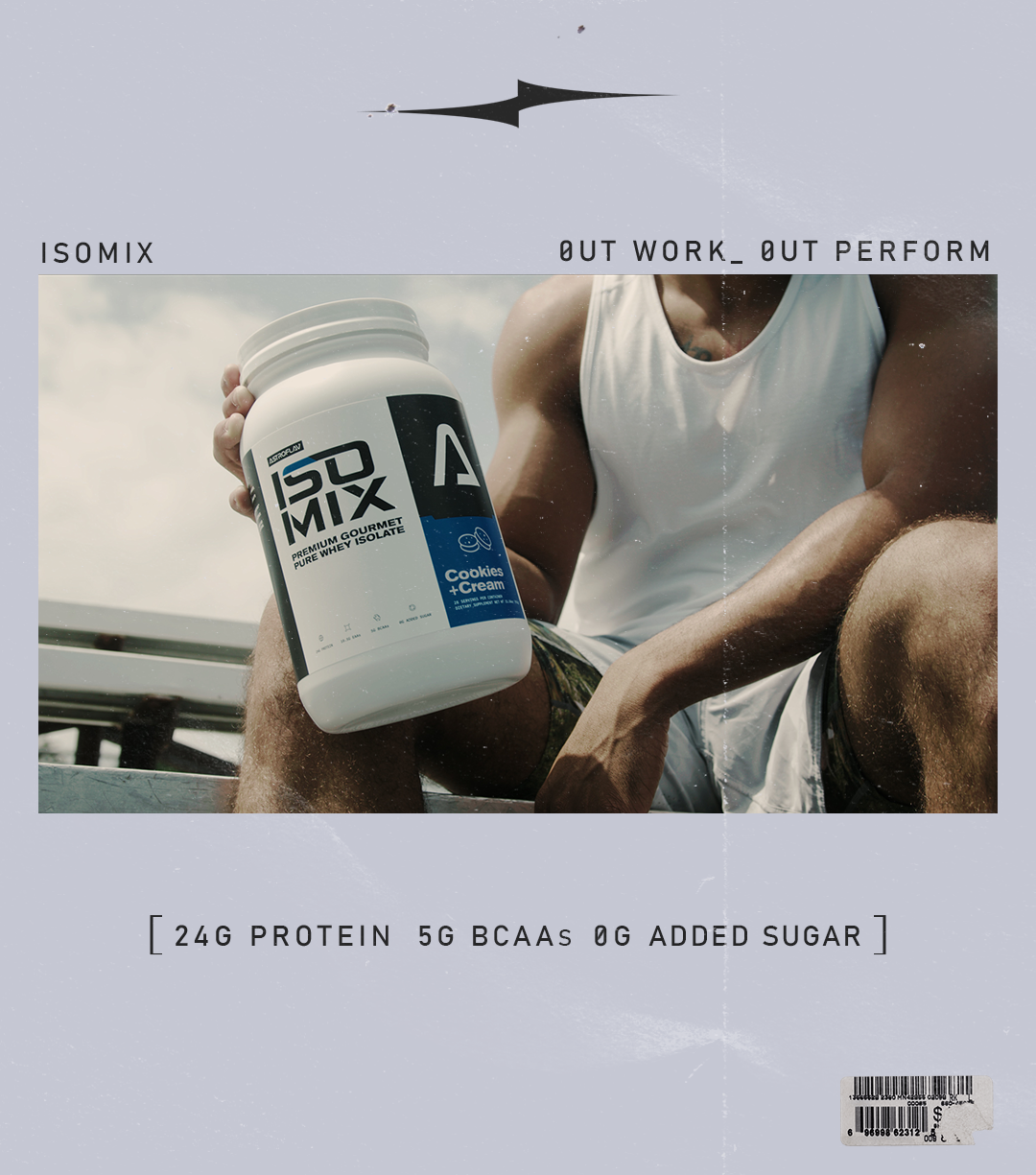
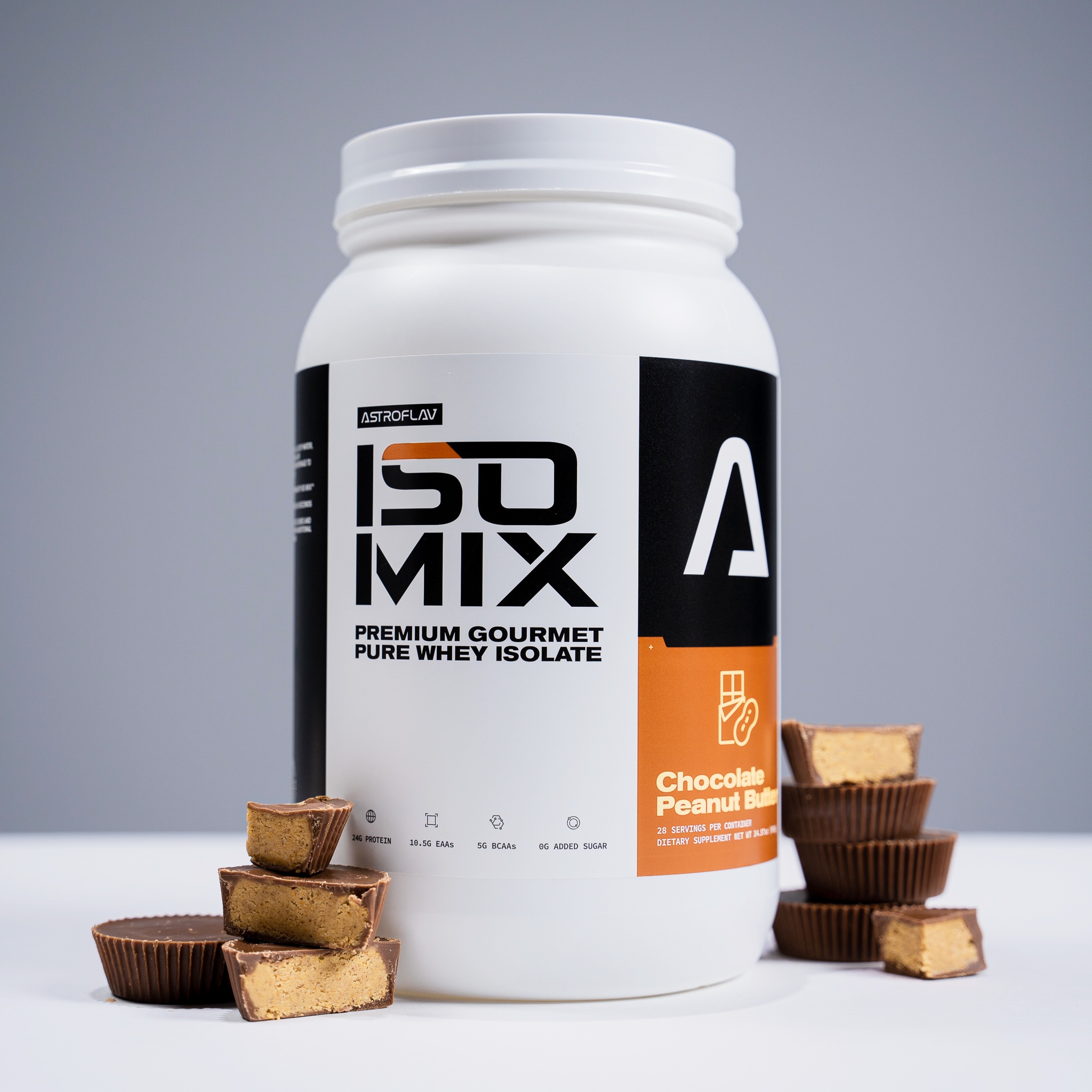
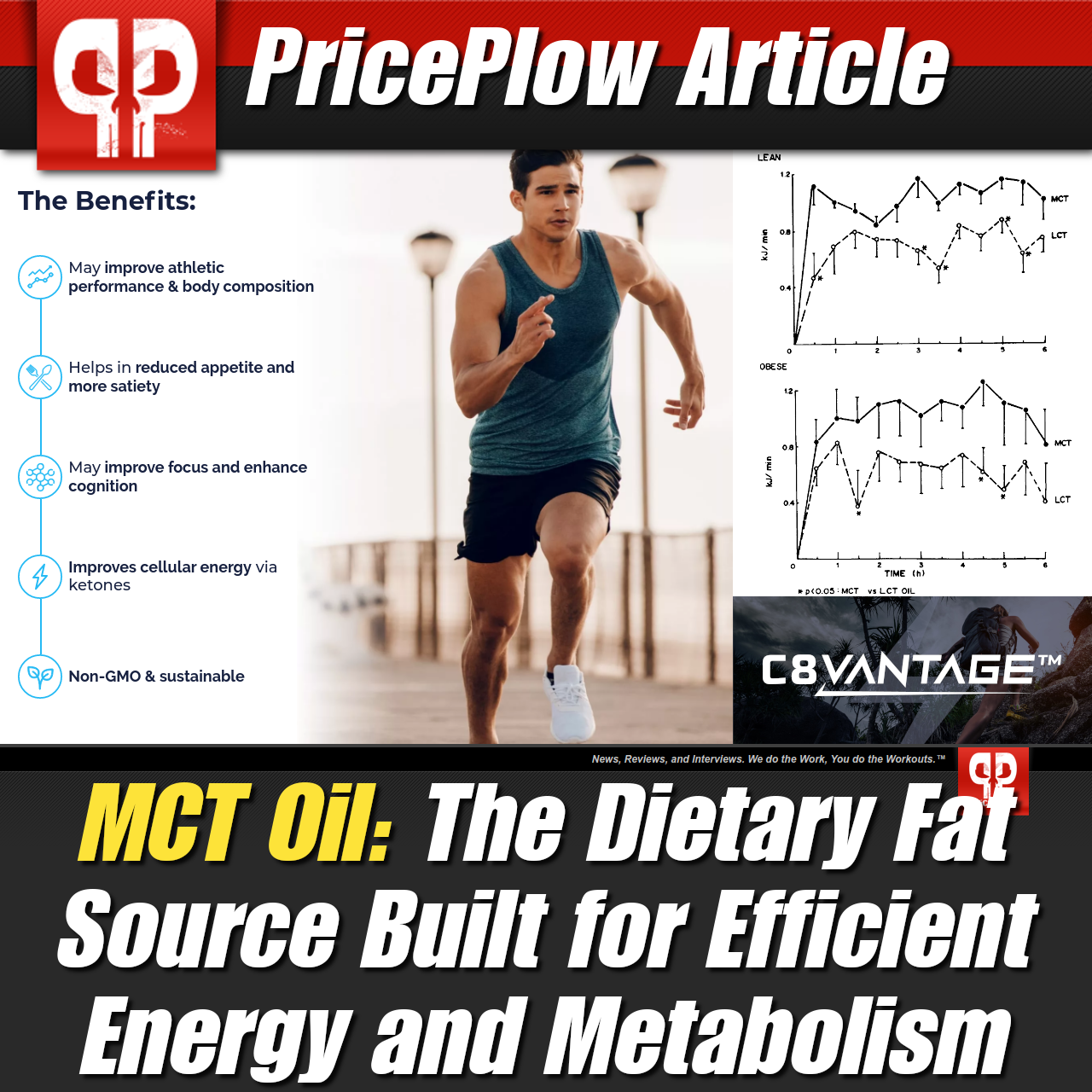
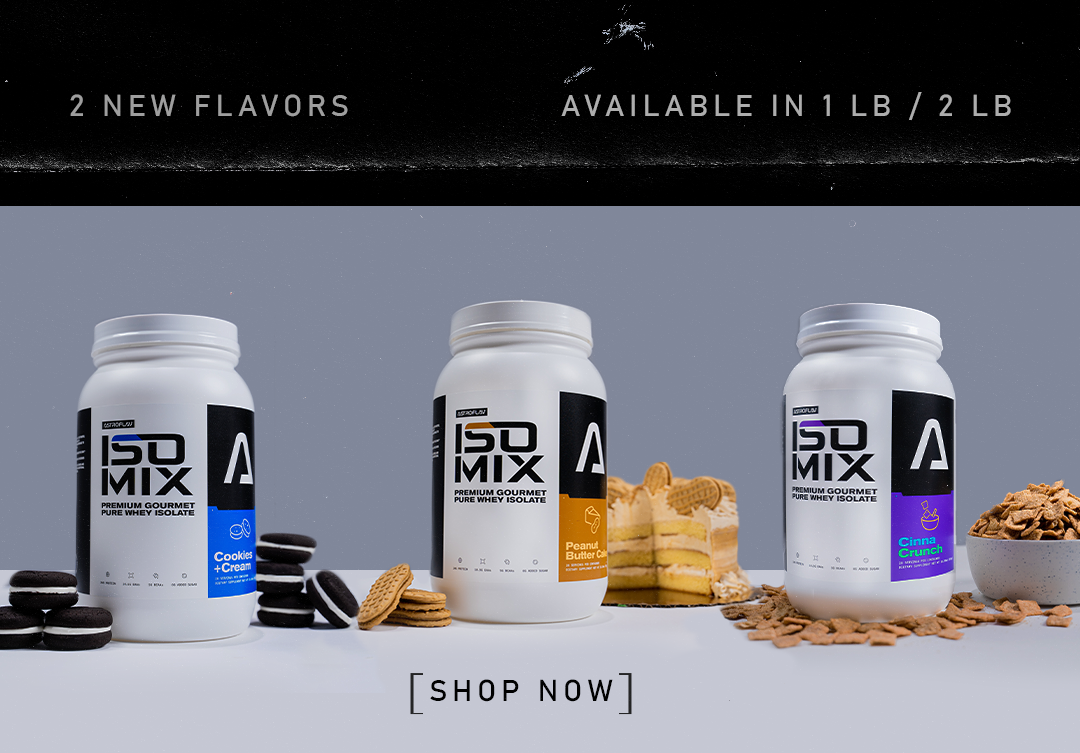
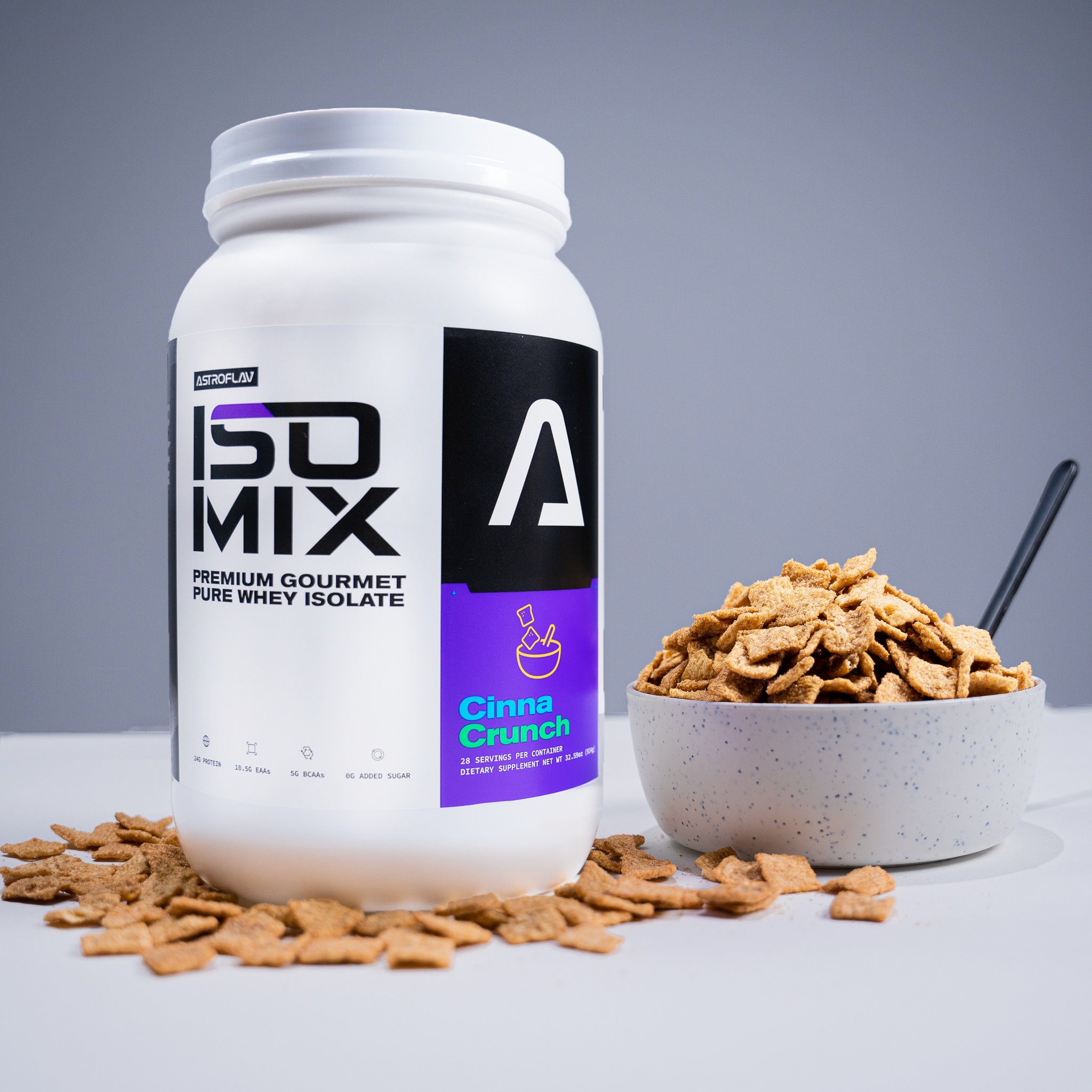

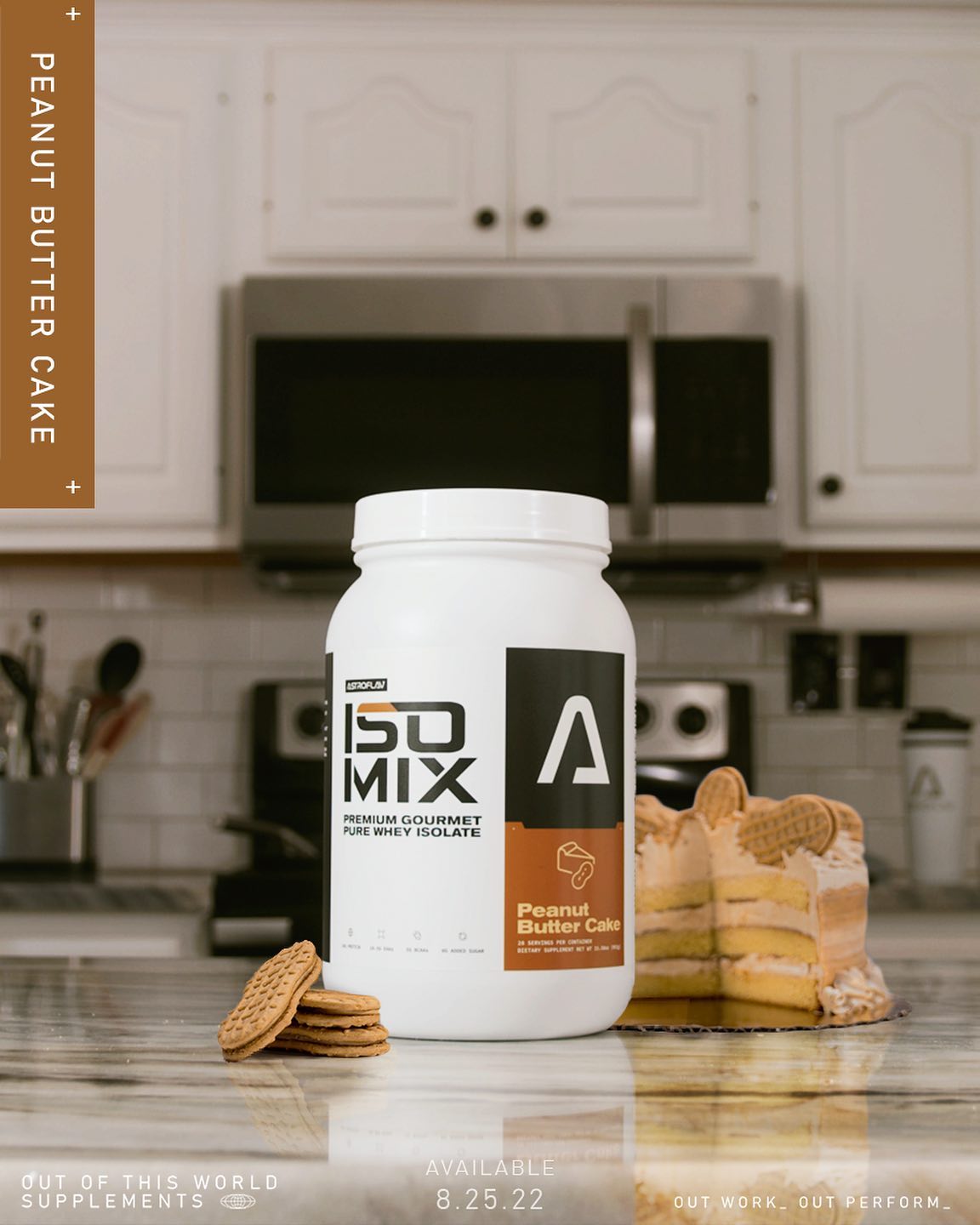
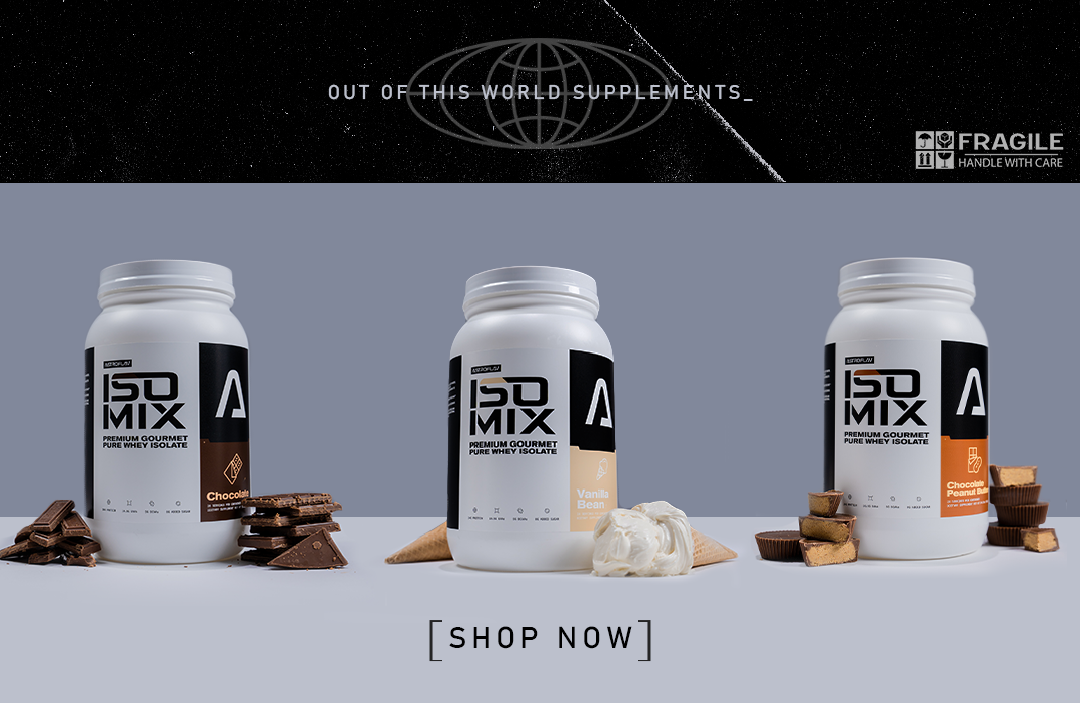
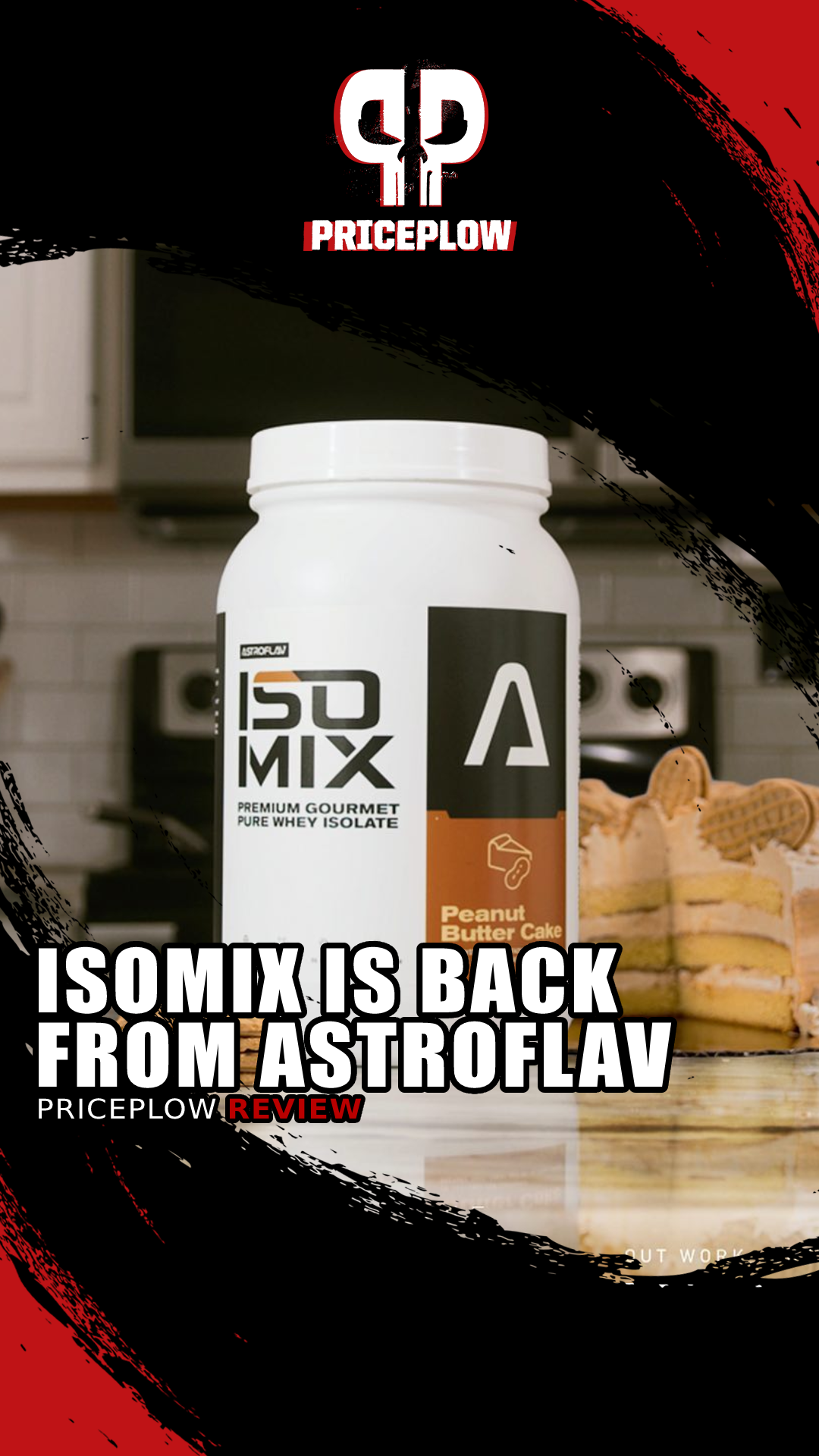
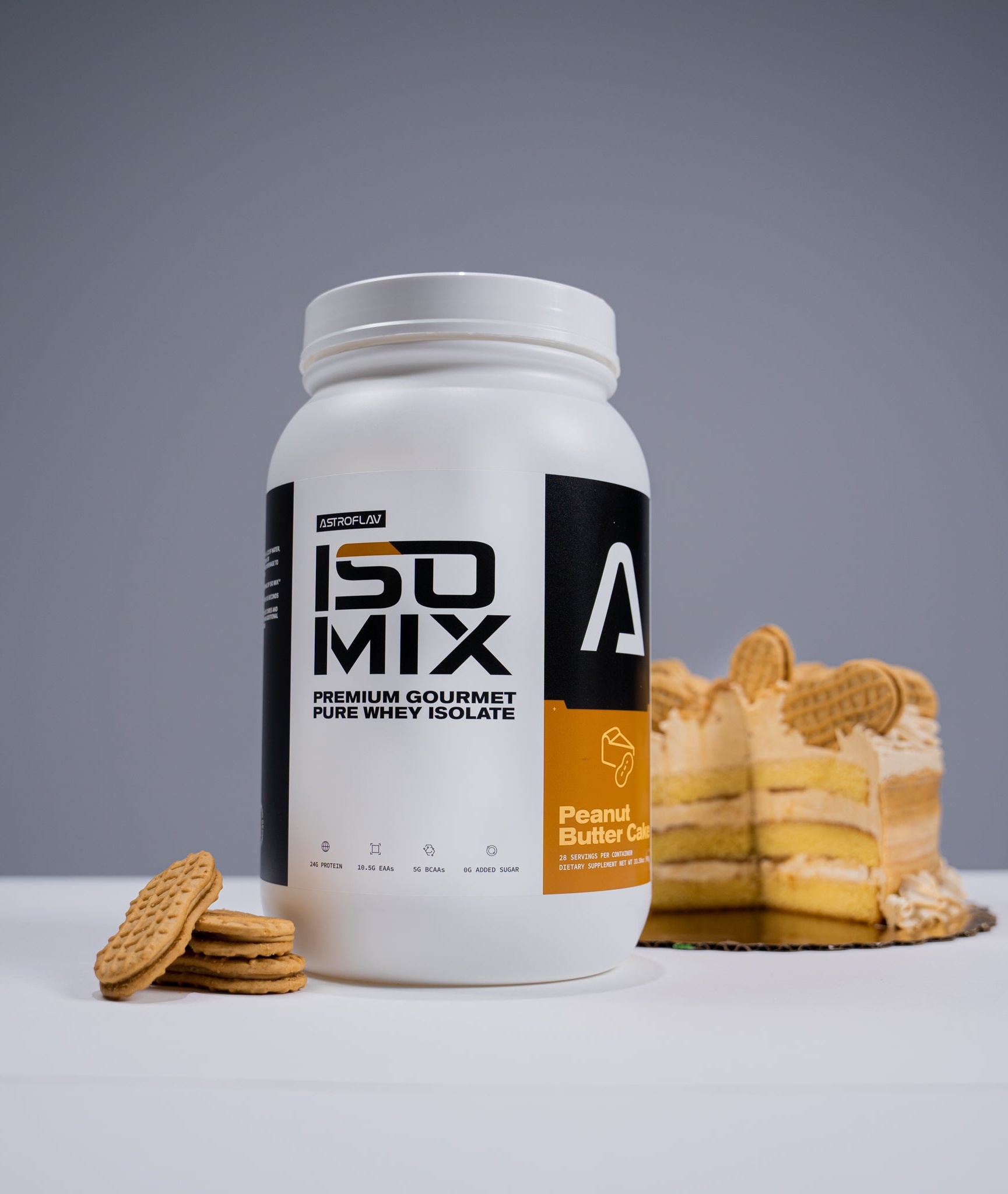




Comments and Discussion (Powered by the PricePlow Forum)